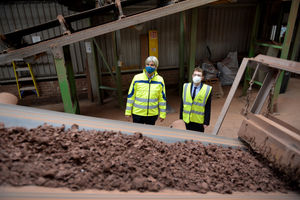Black Country firms join forces for groundbreaking carbon capture project
Tarmac has joined forces with fellow Black Country firm Dreadnought Tiles for a groundbreaking project to reduce carbon emissions from heavy industry.

The Government-backed research, run by Cambridge Carbon Capture (CCC), will see CO2 and NOx emissions captured from a clay roof tile kiln at Dreadnought Tiles’ production site in Dudley.
It will then be converted into a solid mineral by-product which will be made into concrete blocks at Tarmac’s Wolverhampton site.
If successful, the second phase of the project would involve the construction of a building made from the captured CO2.
As well as converting carbon dioxide into construction materials, the CO2LOC technology also produces silica and metals such as Nickel and Cobalt, which are needed to produce the batteries for electric vehicles and mobile phones.
According to CCC, the combined revenues from the sale of these by-products is more than the cost of capturing the CO2, making it possible to capture the gas for a profit.
Alex Patrick-Smith, CEO of Dreadnought Tiles said: "This exciting project has the potential to turn our CO2 emissions, from a cost and a major challenge for our business, into a value added and a path to help achieve net zero targets."
Cambridge Carbon Capture CEO Michael Evans, said: "Through this project, we aim to demonstrate a route to making CO2 sequestration profitable.
"This would unlock significant investment, delivering a technology which could make a sizeable contribution to the UK reaching its emissions reduction goals."
Funding for the project will be provided through the Government’s modern industrial strategy.
It comes after Boris Johnson unveiled a 10-point plan for a ‘Green Industrial Revolution’, which aims to phase out petrol and diesel cars by 2030, and remove 10 megatons of carbon dioxide via carbon capture and storage.



